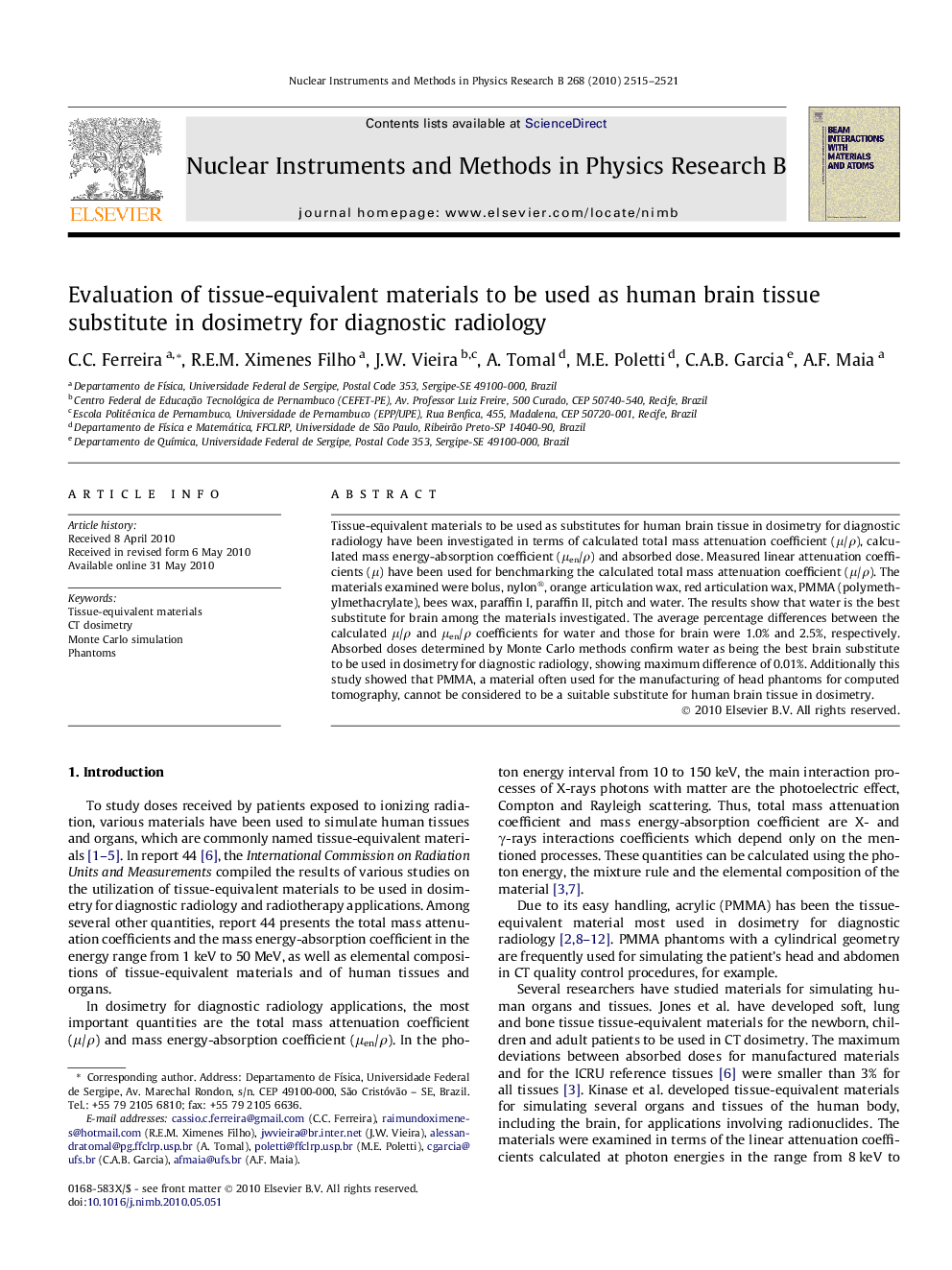| Article ID | Journal | Published Year | Pages | File Type |
|---|---|---|---|---|
| 1681782 | Nuclear Instruments and Methods in Physics Research Section B: Beam Interactions with Materials and Atoms | 2010 | 7 Pages |
Tissue-equivalent materials to be used as substitutes for human brain tissue in dosimetry for diagnostic radiology have been investigated in terms of calculated total mass attenuation coefficient (μ/ρ), calculated mass energy-absorption coefficient (μen/ρ) and absorbed dose. Measured linear attenuation coefficients (μ) have been used for benchmarking the calculated total mass attenuation coefficient (μ/ρ). The materials examined were bolus, nylon®, orange articulation wax, red articulation wax, PMMA (polymethylmethacrylate), bees wax, paraffin I, paraffin II, pitch and water. The results show that water is the best substitute for brain among the materials investigated. The average percentage differences between the calculated μ/ρ and μen/ρ coefficients for water and those for brain were 1.0% and 2.5%, respectively. Absorbed doses determined by Monte Carlo methods confirm water as being the best brain substitute to be used in dosimetry for diagnostic radiology, showing maximum difference of 0.01%. Additionally this study showed that PMMA, a material often used for the manufacturing of head phantoms for computed tomography, cannot be considered to be a suitable substitute for human brain tissue in dosimetry.
